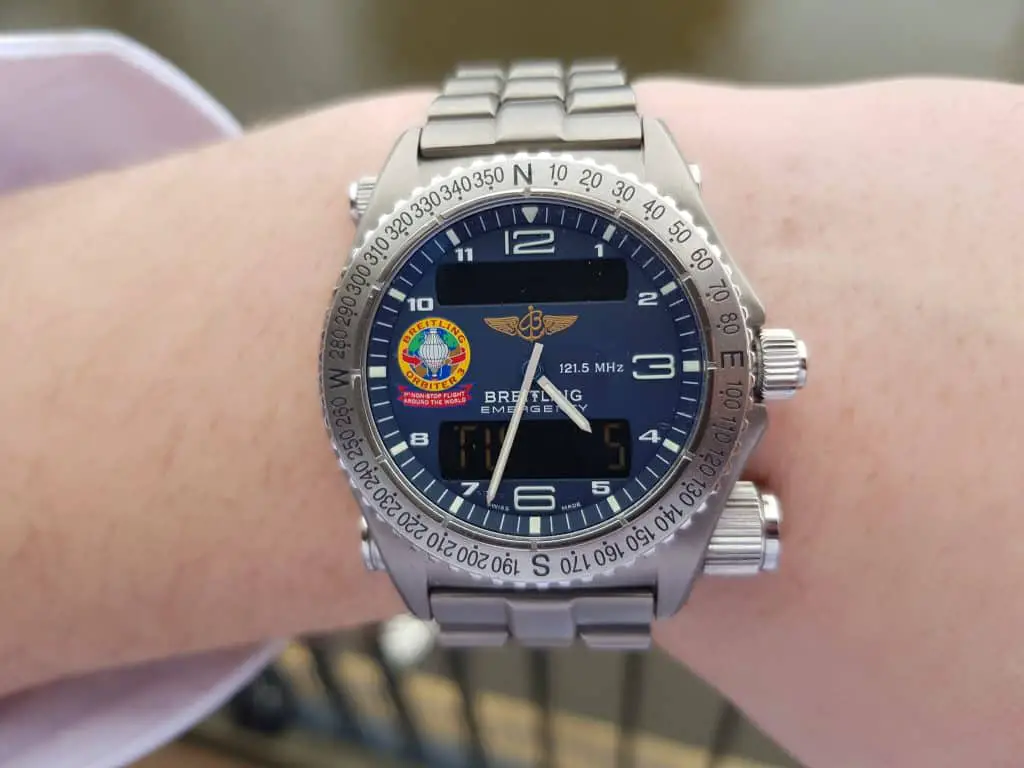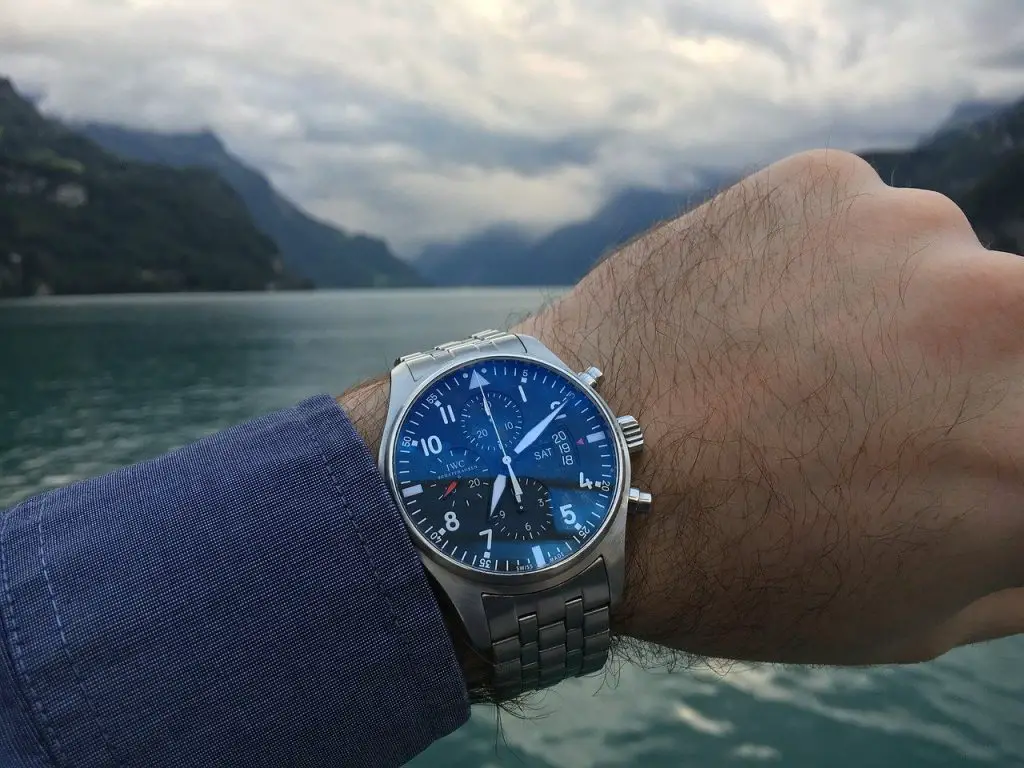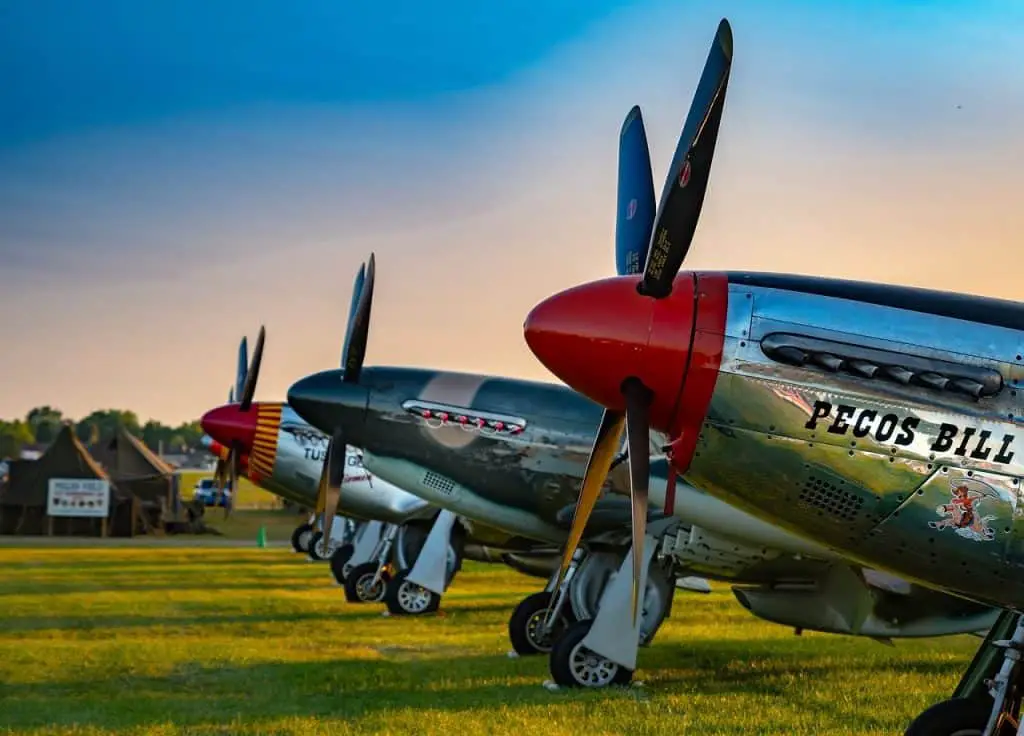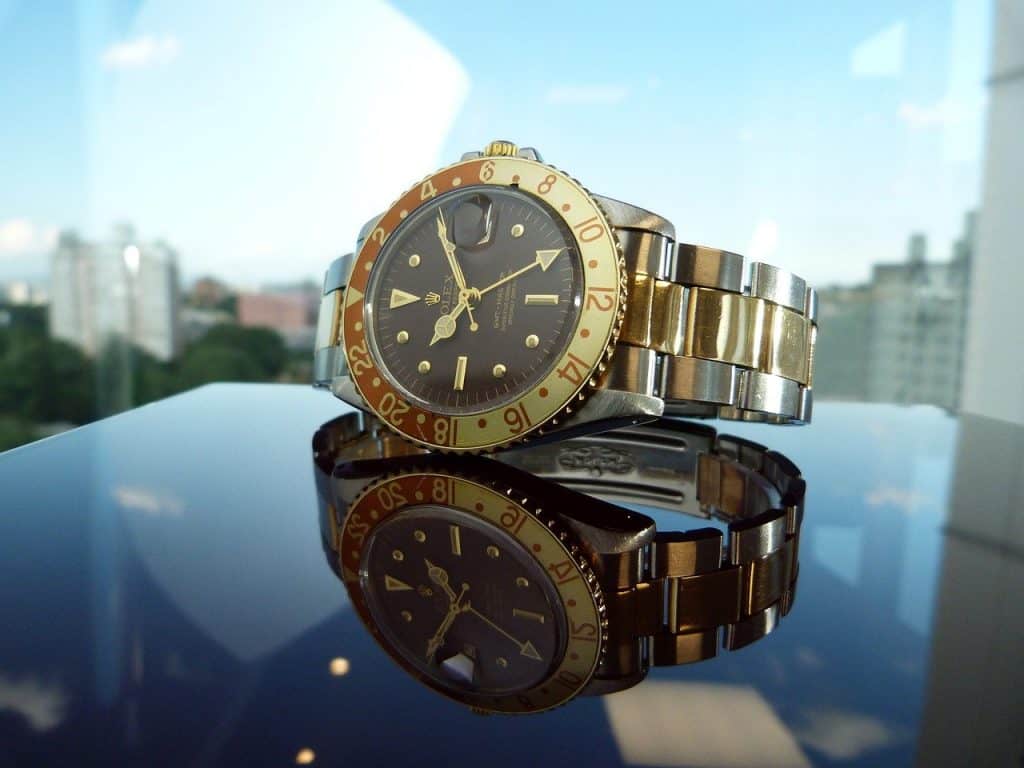A wristwatch is a common sight nowadays, but there’s an immense variety between them. One of those variants is a pilot watch, but what is a pilot watch?
A pilot watch is a watch specifically designed to aid pilots. Features of a pilot watch are a large and easy-to-read dial, an oversized crown, and a watch face with luminosity so you can read the face in the dark.
Besides being extremely useful and looking great, a pilot watch is also believed to be the first wristwatch ever. In this article, we’ll dive deeper into the history of pilot watches and their standout features!

Table of Contents
What Is A Pilot Watch And What Are Its Defining Features
A pilot watch is a watch designed with the needs of pilots in mind. As a pilot, a regular watch wasn’t the most practical, especially back in the day.
Pilot watches were initially created out of necessity. Nowadays, though, they’re extremely popular among the ordinary, non-pilot folk. And they’re pretty popular too!
A pilot watch is one of the more popular watch types due to its beautiful design and great functions.
Initially, these watches were created to aid pilots. To do this, the watch had to include some features that would make the life of a pilot easier.
1. A Large And Easy-To-Read Face
A large face is probably one of the most defining features of a pilot watch. As a pilot, you’re busy with many different things to keep the plane in the air and on course.
To not distract from all the other tasks of a pilot, a large and easy-to-read dial will let you take a quick look at your watch to get the time.
And due to the face being large, you’ll easily be able to see everything you need—no need for a second look or having to look for longer than necessary.
The width of a watch is typically measured in diameter. The diameter of your watch can vary widely depending on the type of watch and the brand, but generally, the average width tends to hover between 35 millimeters and 42 millimeters.
An old-school pilot watch, however, could be as large as 55 millimeters!
This has been dialed down lately since pilots no longer fly under the same dire conditions as they used to, but pilot watches still tend to be on the larger side.
And that all originated for one simple reason; to aid the pilot.
To aid pilots even more, most pilot watches feature a dark face with contrasting hands and numbers. The numbers used are usually Arabic as well (Arabic numbers are the numbers we use every day (1-9)) and often contain a glow-in-the-dark feature.
This way, you can read the time with a simple glance at your watch, in both good and bad weather, during the day and night.

2. A Large Crown
Another defining feature of a pilot watch has to be the larger crown. The crown is used for many of a watch’s features. And seeing that pilots back in the day always wore thick gloves, a larger crown would make it much easier to manipulate.
Nowadays, though, gloves aren’t always used. The main reason for gloves back in the day was that the cockpit wasn’t heated and sometimes not even covered or closed at all. This led to some seriously cold cockpits that simply required gloves. Nowadays, the cockpits are heated, so the crucial need for gloves is no longer there.
Like aviation, a pilot watch has undergone many changes and evolutions, and the larger crown is not a feature seen in many more modern pilot watches.
3. A Long Strap
This feature again ties back to the fact that cockpits used to be unheated. Due to the frigid environment that pilots would find themselves in, it was necessary to be dressed appropriately.
This involved wearing a flying jacket that would cover your wrists, so the pilots used to wear their watches over their jackets. This meant that the strap needed to be larger, as it now needed to cover a larger area.
And to ensure that the watch would still fit even when you’re not flying (and wearing a thick jacket), the strap was made of leather, as you could easily tighten it up in different holes.
Nowadays, though, this isn’t really something you’ll find back in a modern pilot watch. The watch will be measured to fit nicely on your wrist when you purchase a watch.
4. A Face That Would Luminate In The Dark
A face that would glow in the dark is one of those ‘quality of life’ additions. This feature links back to the large and easy-to-read dial as well.
To help pilots that flew at night, a pilot watch would feature a glow-in-the-dark dial. When it was dark outside, the dial would illuminate so that the pilot could still easily read the watch, even when its pitch black.
The History Behind Pilot Watches

Now that we know some of a pilot watch’s defining features, let’s look at why they were created in the first place!
Most people wore pocket watches in the late 19th and early 20th century. Some argue that the classic wristwatch we know of today hadn’t even been around at all. Instead, people used to strap their pocket watch around their wrist.
This, of course, would lead to innovations taking place. In 1904, Cartier designed the Cartier Santos, named after Alberto Santos-Dumont, the person that requested such a watch.
This watch was a wristwatch, allowing the pilot Alberto Sants-Dumont to keep time without getting his watch out of his pocket.
The Cartier Santos was a true piece of innovation, and some even see it as the first actual wristwatch. Crazy to think that the most commonly worn watches originate all the way back to the needs of pilots.
Over time, however, a pilot watch has changed a lot. Aviation and technology are changing daily, and a pilot watch must meet different demands.
As mentioned before, cockpits used to be unheated, making the cockpit a frigid place where you need to be appropriately dressed. This isn’t an issue nowadays, so the need for a larger strap is gone.
The need for a large face is still here and is actually one of the few defining features of a pilot watch that’s still seen today.
With all the advances in technology, the need for specific pilot watches will undoubtedly decrease, as most features will probably be incorporated in the cockpit, but that doesn’t mean that a pilot watch will no longer have a use.
What Makes A Pilot Watch Different From Normal Watches

The main differences between pilot and ‘regular’ watches have been discussed above. Think of the larger face, illuminating qualities, and larger crowns.
However, with the ever-changing environments of aviation, the need for a specific watch diminishes. So many changes have been made to a pilot watch that it’s challenging to spot one in today’s market. Gone are the days of 55-millimeter watches.
The most common giveaway would be the name, as most watches have some sort of aviation term in it. IWC’s Big Pilot and Breitling’s Navitimer are both pilot watches, for example.
As mentioned before, the best giveaway, besides the name, is the larger face. This is an aesthetic feature that has luckily not gone away. Besides having it carry a piece of history, it also looks fantastic.
With the larger face usually also comes a larger crown. This is yet another giveaway of a classic pilot watch that’s still around.
One thing to remember with pilot watches is that these are not weird or different watches. You may come to that conclusion as most aspects of a pilot watch are larger than that of a regular one, but that’s not the case.
Some of the most popular watches in the world are actually pilot watches. Think of an Omega Speedmaster or a Rolex GMT-Master II. These are both pilot watches and are both incredibly popular.
Closing Words
A pilot watch is a watch born out of necessity, specifically for pilots. As the name suggests, a pilot watch is made to aid pilots, and it does this with some specific features such as a larger face, illuminating hands and numbers, larger straps, and larger crowns.
Nowadays, though, most of these features are no longer the necessity they used to be. Technology continues to advance, and things that used to be critical are no longer necessary.
This technological advance sparked many evolutions in pilot watches to the point where they’re currently very similar to ordinary timepieces. The main giveaways would be in the name or the larger face and crown.
Even though a pilot watch is not the necessity it once was, they’re still incredibly popular. Pilot watches are loved for their larger faces and gorgeous aesthetics, and some of the most popular watches are actually pilot watches!
